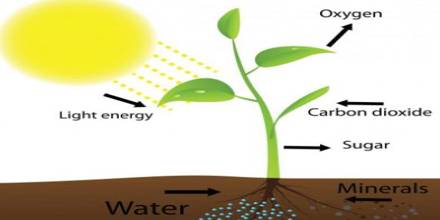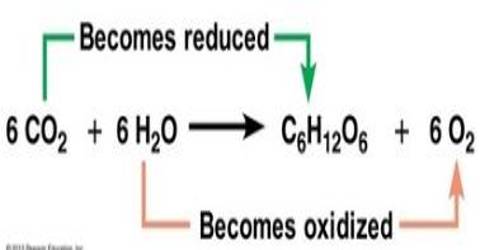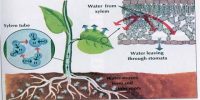Photosynthesis occurs in green plants, seaweeds, algae, and certain bacteria. Plant photosynthesis occurs in leaves and green stems within specialized cell structures called chloroplasts. One plant leaf is composed of tens of thousands of cells, and each cell contains 40 to 50 chloroplasts. Oxygen is produced by photolysis of water. This photolysis of water is brought about by the light, usually sunlight. Photolysis is a part of the light-dependent reactions of photosynthesis.
Source of oxygen during photosynthesis:
This is an experiment that oxygen comes out during photosynthesis.
The source of oxygen evolved in photosynthesis: Photolysis of water is the main source of oxygen released during photosynthesis. During photosynthesis, green plants produce carbohydrates by the reactions; between the atmospheric carbon dioxide CO2 and the absorbed soil water and in this; process, oxygen is formed as a byproduct. Photolysis is defined as the splitting of the H2O molecule into hydrogen ions, electrons, and oxygen in the presence of light and grana.
6 CO2 + 12 H2O → light/Chlorophyll → C6H12O6 + 6 H2O + 6 O2
It has been proved by the experiment that this oxygen comes out of the water and not from carbon dioxide. Water from the soil is taken up by the roots, sent up through the stem and finally to the leaves where it is distributed into the mesophyll tissue. This concept can be proved by the following experiments.
1. Hill reactions: Robin Hill, an English Biochemist, in 1937 discovered that the oxygen during the photosynthesis comes from water and not from carbon dioxide. Hill demonstrates that isolated chloroplasts in the presence of light, water, and a suitable hydrogen acceptor involve oxygen in the absence of carbon dioxide. Two molecules of water are split to create four free protons and one molecule of oxygen. The oxygen atoms from the carbon dioxide are not released but stay as part of the sugar molecules. This experiment is known as Hill’s reaction.
A (Hydrogen Acceptor) H2O → light/Chlorophyll → A H2 + ½ O2

2. Van Niel’s concept: Van Neil, in the field of photosynthetic sulphur, bacteria, showed that sulphur bacteria use H2S gas instead of H2O and thus sulphur is evoked in the reaction with CO2. Thus it is proved that oxygen evolved during photosynthesis in the higher plants must come from water and not from carbon dioxide. Water is also used as a source of hydrogen required for the reduction of carbon dioxide to form carbohydrates.
2 H2S + CO2 → CH2O +2S + H2O
3. Ruben and Camen’s radio Active Experiment: In 1941, Samual Ruben and Camen marked oxygen and water by the radioactive Isotope 18O2 and put a few algal plants in the same water. They saw that the O2 evolved during the photosynthesis was 18O2. So it is proved that the O2 evolved during photosynthesis comes out from the water and not from carbon dioxide.
6 CO2 + 12 H218O → light/Chlorophyll → C6H12O6 + 6 H2O + 6 18O2
They also demonstrated the same experiment by marking the oxygen or carbon dioxide with the radioactive isotope 18O2 and saw that the O2 evolved during this time was not marked with a radioactive isotope. Thus it is proved that the oxygen evolved during photosynthesis does not come from carbon dioxide. Hence the source for oxygen gas is water and it is released when water splits in the presence of sunlight into oxygen and hydrogen ions.
6 CO218 + 12 H2O → light/Chlorophyll → C6H12O618 + 6 H2O18 + 6 O2













